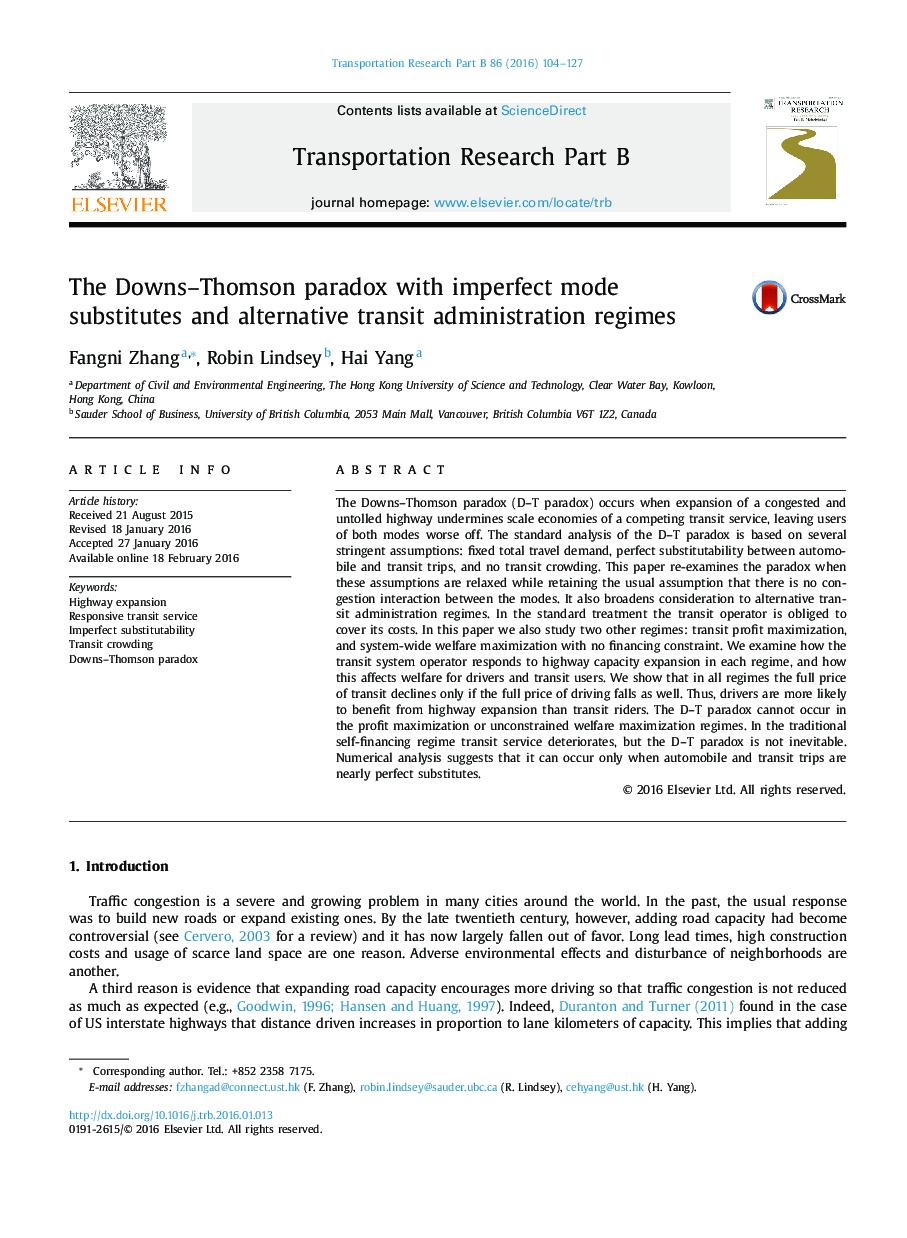| کد مقاله | کد نشریه | سال انتشار | مقاله انگلیسی | نسخه تمام متن |
|---|---|---|---|---|
| 1131573 | 1488958 | 2016 | 24 صفحه PDF | دانلود رایگان |
• The Downs–Thomson paradox occurs when highway expansion undermines scale economies of a competing transit service.
• We analyze the paradox given imperfect mode substitutability, elastic total demand, and transit crowding.
• The paradox cannot occur if the operator maximizes profit or social welfare.
• The paradox can occur if the operator maximizes welfare subject to a self-financing constraint, but only if car and transit are close substitutes.
• Numerical analysis shows how the operator adjusts fare and service frequency in three administration regimes.
The Downs–Thomson paradox (D–T paradox) occurs when expansion of a congested and untolled highway undermines scale economies of a competing transit service, leaving users of both modes worse off. The standard analysis of the D–T paradox is based on several stringent assumptions: fixed total travel demand, perfect substitutability between automobile and transit trips, and no transit crowding. This paper re-examines the paradox when these assumptions are relaxed while retaining the usual assumption that there is no congestion interaction between the modes. It also broadens consideration to alternative transit administration regimes. In the standard treatment the transit operator is obliged to cover its costs. In this paper we also study two other regimes: transit profit maximization, and system-wide welfare maximization with no financing constraint. We examine how the transit system operator responds to highway capacity expansion in each regime, and how this affects welfare for drivers and transit users. We show that in all regimes the full price of transit declines only if the full price of driving falls as well. Thus, drivers are more likely to benefit from highway expansion than transit riders. The D–T paradox cannot occur in the profit maximization or unconstrained welfare maximization regimes. In the traditional self-financing regime transit service deteriorates, but the D–T paradox is not inevitable. Numerical analysis suggests that it can occur only when automobile and transit trips are nearly perfect substitutes.
Journal: Transportation Research Part B: Methodological - Volume 86, April 2016, Pages 104–127
